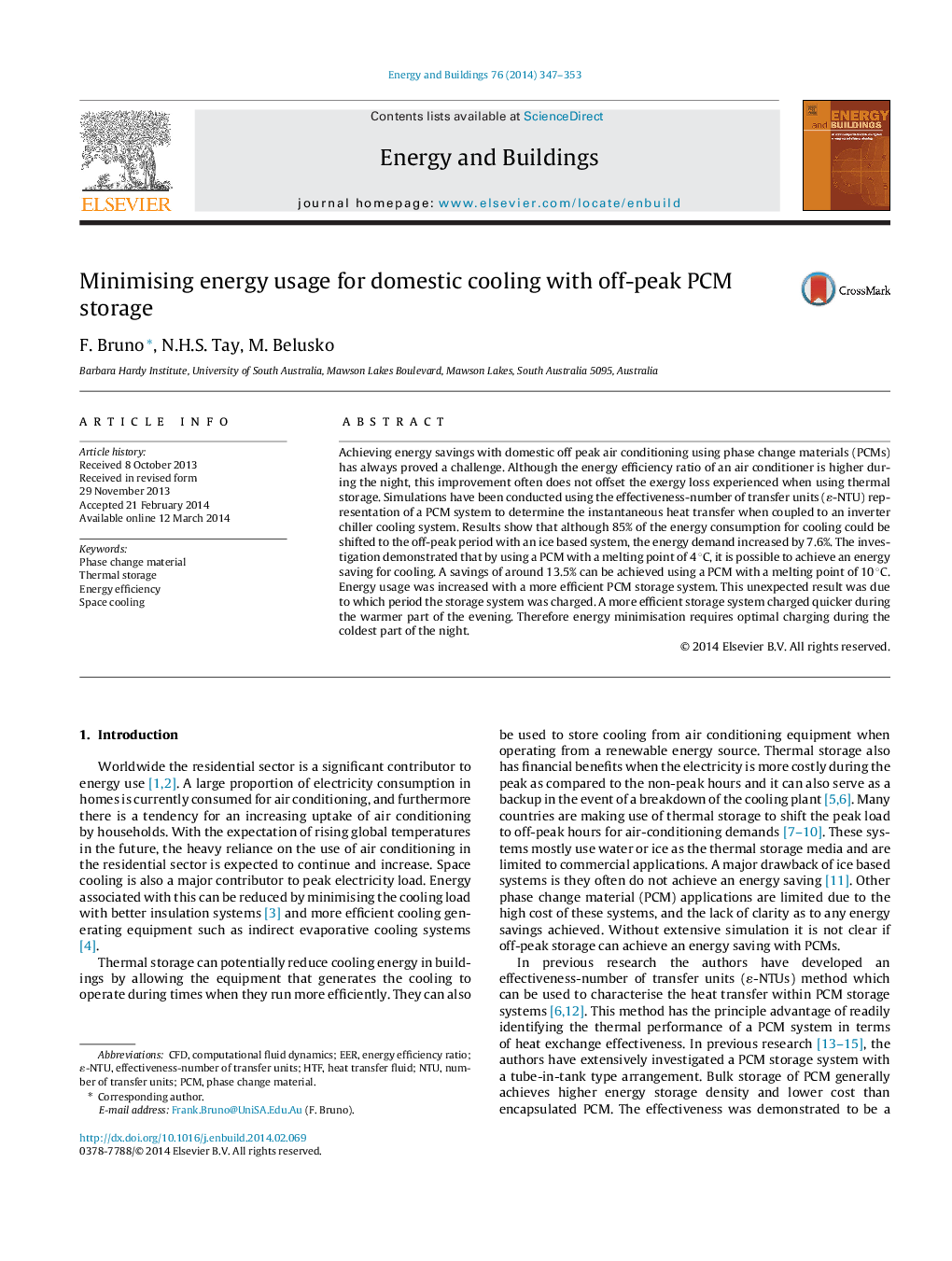| Article ID | Journal | Published Year | Pages | File Type |
|---|---|---|---|---|
| 6733788 | Energy and Buildings | 2014 | 7 Pages |
Abstract
Achieving energy savings with domestic off peak air conditioning using phase change materials (PCMs) has always proved a challenge. Although the energy efficiency ratio of an air conditioner is higher during the night, this improvement often does not offset the exergy loss experienced when using thermal storage. Simulations have been conducted using the effectiveness-number of transfer units (É-NTU) representation of a PCM system to determine the instantaneous heat transfer when coupled to an inverter chiller cooling system. Results show that although 85% of the energy consumption for cooling could be shifted to the off-peak period with an ice based system, the energy demand increased by 7.6%. The investigation demonstrated that by using a PCM with a melting point of 4 °C, it is possible to achieve an energy saving for cooling. A savings of around 13.5% can be achieved using a PCM with a melting point of 10 °C. Energy usage was increased with a more efficient PCM storage system. This unexpected result was due to which period the storage system was charged. A more efficient storage system charged quicker during the warmer part of the evening. Therefore energy minimisation requires optimal charging during the coldest part of the night.
Keywords
Related Topics
Physical Sciences and Engineering
Energy
Renewable Energy, Sustainability and the Environment
Authors
F. Bruno, N.H.S. Tay, M. Belusko,
